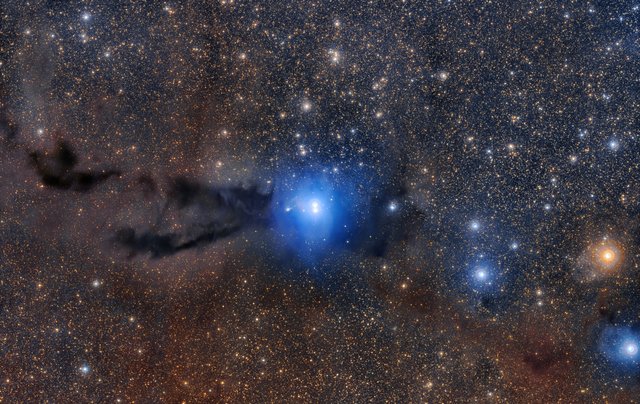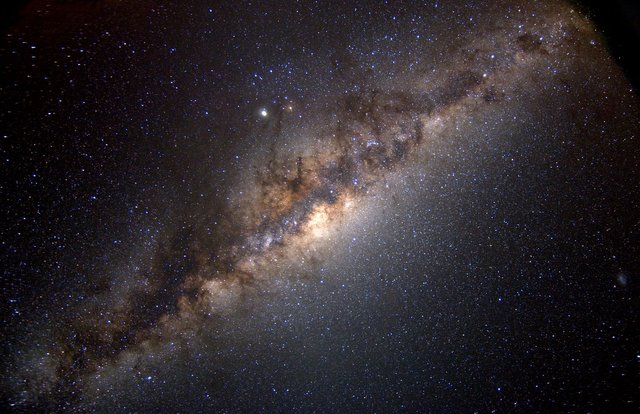Picture of The Day: Darkness is Not The Emptiness

full size image
I dare to assume that all your attention is concentrated on the bright blue glow in the center of the picture. Truly, the light of the newborn stars is fascinating. But, I will ask you to look away from the light in the direction of the darkness.

This region is located in the Scorpius constellation (600 light years from Earth). [ESO]
It may seem that these curved dark areas are the lifeless space, the void among the bright lights. Actually, it is the foundation of the creation. Before you is a dark nebula Lupus 3- incredibly dense accumulation of cold particles that absorb and scatter the light.
Such plots of the interstellar medium contain a huge amount of cosmic dust and gas. The concentration of a substance is so high that under the external influences, in a particularly dense zones, starts the process of formation of new stars - gravitational compression.
The shock wave from a supernova, a collision with another nebula, the influence of an external agent all of this can start the process of gravitational compression. Gradually inside the nebula begins to increase temperature and pressure. At some point in extreme conditions, in the center of the compressing cloud will born a protostar. Two bright stars in the center of the image were formed as a result of this process.
These two stars are still very young, in their depths have not yet begun the process of thermonuclear fusion. In the process of compression, gravitational energy is converted into thermal energy in the visible range. Thus, the light of these stars is not a result of combustion, and the result of compression.
In the first millions of years after birth, the faint light of stars was delayed by the dense dusty veil of the parent nebula and did not penetrate outside. They were like pearls hidden inside the shell and invisible to the human eye. But the stars grew, increasing its temperature and brightness. Over time, they were able to generate an intense stellar wind that cleared the surrounding space from dust and gas, having revealed to the cosmos new luminaries.
If ever you find yourself high in the mountains, away from a big city, where there is no light pollution, look closely at the Milky Way. In the endless bright river of billions of stars, you can see huge dark dips.

image source
Now you will know that somewhere there, in the depths of darkness, there are hiding newborn stars. Maybe someday, next to one of these stars there will be a planet, which will be suitable for life.

Very informative your publication. You always bring us quality articles, grateful for that.
Nice to hear :)
Interesting, I've never heard of the dark nebula Lupus 3. Thanks for the read @natord as usual it was informative and enjoyable.
Thank you for reading!
ThQ For Help us.😍
Hi, I found some acronyms/abbreviations in this post. This is how they expand:
Following you!